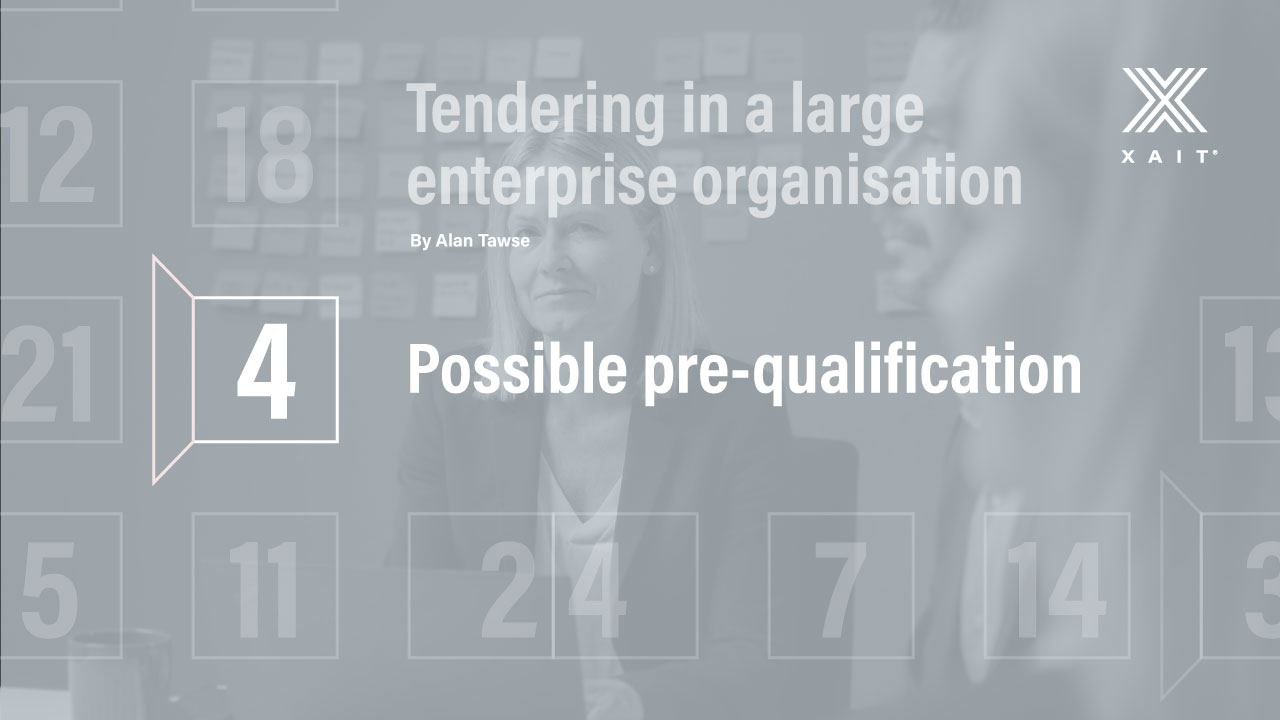In some cases, clients will decide to implement a pre-tender process or pre-qualification, to allow prospective bidders to provide information about their company and capabilities.
This may range from completing a detailed questionnaire, to a form of mini-tender to establish that they meet a minimum standard, in order to submit a tender response. Typical elements of a pre-qualification process would include detailing capabilities such as:
- capacity to undertake the work
- compliance with required quality standards
- track record to demonstrate experience
- financial strength
- technical competence
Recognize the importance
It is important to treat a pre-qualification with the same care and attention as a traditional tender submission because this is a potential elimination process. This will be the first impression that the client procurement team has of the enterprise, and so is an opportunity to create a positive impression to carry over into the tender phase.
A lackluster or barely compliant response may still qualify an enterprise to participate in the forthcoming tender, but is a wasted opportunity to establish themselves as a polished and professional supplier.
Early communication opportunity
The pre-qualification process is also a chance to communicate directly with the client's procurement team, and possibly still a chance to influence their thinking about what will happen during the formal tender phase. It also presents an opportunity to communicate indirectly with competitors by asking clarification questions that are likely to be shared with all the participants.
Even if not specifically asked, participants will often have or take the opportunity to provide additional information together with their response that may affect what the procurement team plans to specify in the tender.
Examples that an enterprise may want to try to affect would include:
- what's included in the scope of work
- the duration of the contract and or option periods
- specific pricing terms and conditions to be included or excluded
- technical requirements
The intention would be to minimize content that the enterprise would find challenging or that gave their competitors an advantage, or include things they expect to work in their favor.
Outstanding effort reaps reward
Don’t under-estimate the opportunity. There have been cases where an enterprise has actually managed to secure work by doing such a good job at the pre-qualification stage compared to their competitors, that the client changed their strategy.
Impressed by the stand-out submission, the client changed their plans and entered straight into a negotiation with that supplier, resulting in a contract award that took all their competitors completely by surprise.









